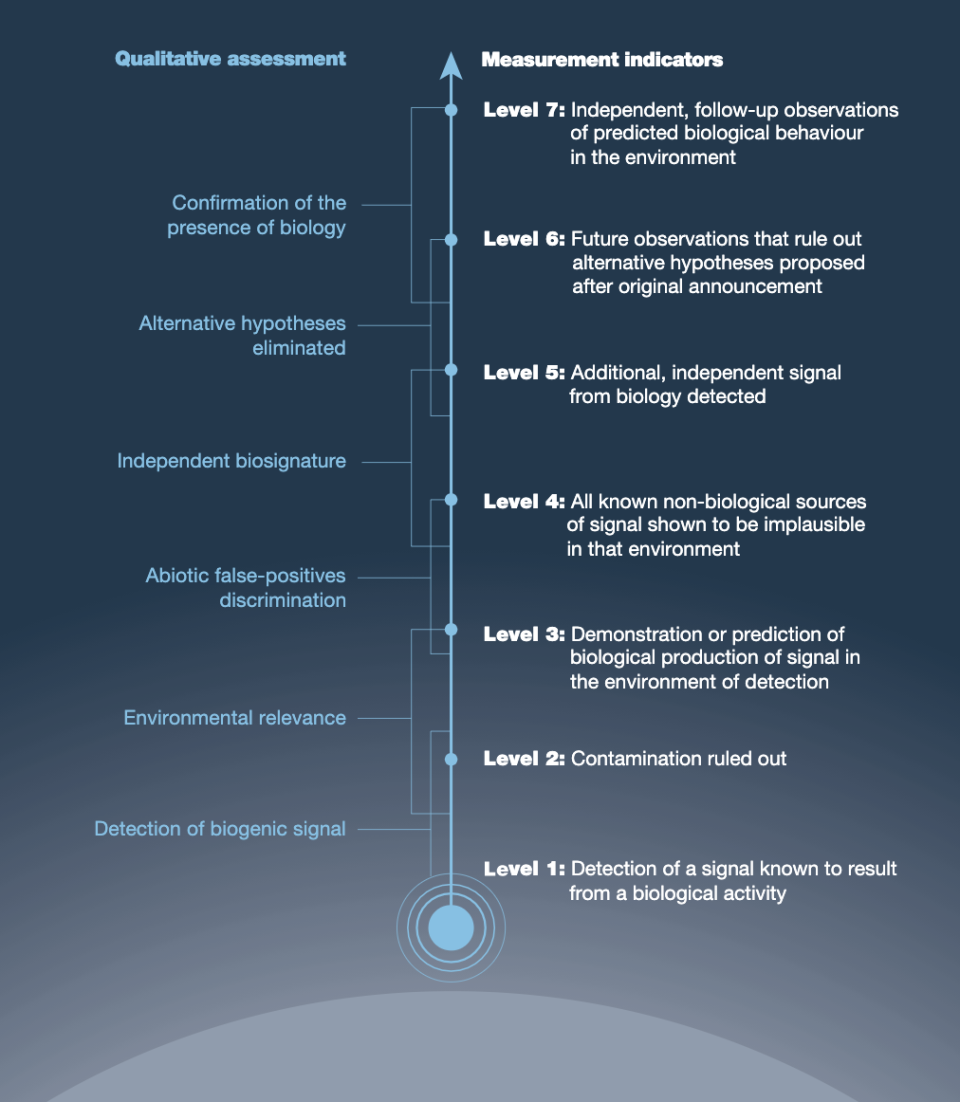New NASA Chart Puts Signs of Aliens Reports into Context
“Signs of life” is a phrase that people throw around a lot when discussing observations of distant planets and moons. It’s hard not to when one hears about plumes of water on Enceladus or salty reservoirs on Ceres. But just how enthusiastic should we laypeople be by any given biology related discovery beyond Earth? A new handy—and evolving—chart from NASA offers a framework to answer the question.
NASA recently announced the framework that scientists, including Jim Green, the agency’s chief scientist, outlined in a paper available here. The paper, “Call for a framework for reporting evidence of life beyond Earth,” claims that “Our generation could realistically be the one to discover evidence of life” on other celestial bodies. The paper adds that “The magnitude of the question of whether we are alone in the Universe, and the public interest therein, opens the possibility that results may be taken to imply more than the observations support, or than the observers intend.”

To that end, Green and his colleagues developed a seven-level qualitative assessment scale; one that people can use to understand the profundity of any particular discovery in the field of astrobiology. Overall, the scale is a way to temper excitement over evidence that may not be as compelling as it seems. Although, again, hearing about discoveries involving say, chemical biomarkers on Venus, is pure dream fuel.
As for the seven levels, they’re a simple way of showing how astrobiologists determine the existence of life; beginning with the detection of a signal scientists know can be a result of life and ending with independent, follow-up observations. In between, is evidence that say, rules out contamination of instruments. Or the possibility that a particular sign of life is actually from a non-biological source.

“Having a scale like this will help us understand where we are in terms of the search for life in particular locations, and in terms of the capabilities of missions and technologies that help us in that quest,” Green said in a NASA press release. Mary Voytek, study co-author and head of NASA’s Astrobiology Program, added that scientists had set the public up to think there are only two options; it’s life or it isn’t. Voytek added, “We need a better way to share the excitement of our discoveries, and demonstrate how each discovery builds on the next, so that we can bring the public and other scientists along on the journey.”
Featured Image: Universal Pictures
The post New NASA Chart Puts Signs of Aliens Reports into Context appeared first on Nerdist.

